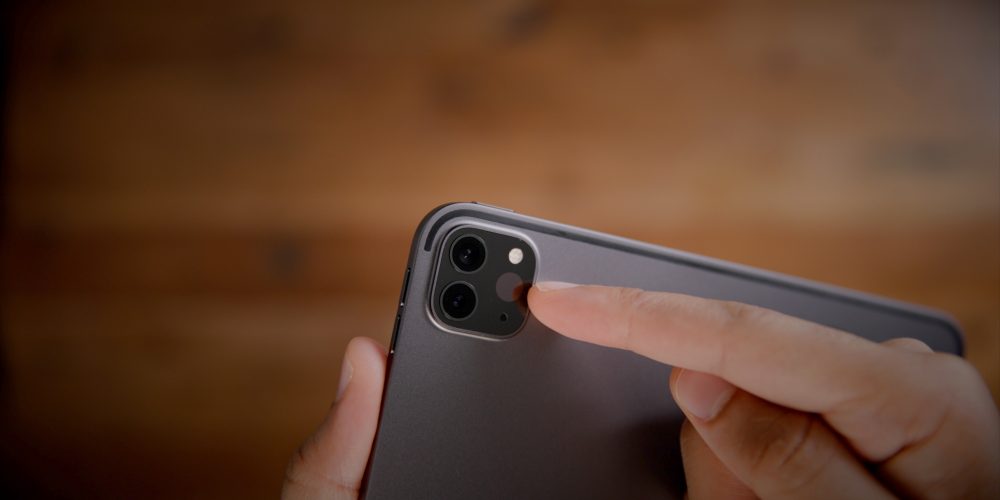
This fall is shaping up to be a busy one for the iPhone. Apple is rumored to be preparing four different iPhone 12 variants set for release in as early as October. Read on as we round up all of the specs, features, and design details that we know about the iPhone 12 so far.
iPhone 12 design
If you find yourself longing for the days of the iPhone 4, 2020 might be the year for you. We expect the iPhone 12 to mark the return to slab-sided design, with reports suggesting that the device will heavily resemble the iPhone 4. Reliable Apple analyst Ming-Chi Kuo has said this will come as part of a significant chassis redesign for the iPhone 12.
Kuo believes that the iPhone 12 will still feature curved glass edges around the display, like the iPhone 11. The analyst has referenced 2/2.5D glass in his various reporting on the 2020 iPhone lineup. Currently, the iPhone 11 Pro features a blended design between the glass of the display and the stainless steel edges. This differs from the iPhone 4, which was completely squared-off around the sides.
A supply chain report has also suggested that the iPhone 12 lineup will be thinner than the iPhone 11, with the largest iPhone 12 model coming in at 7.4mm thick. That’s around 10% thinner than the 8.1mm iPhone 11 Pro Max. Whether or not the rest of the iPhone 12 lineup will be slimmer remains to be seen.
Apple’s return to a boxier industrial design theme with the iPhone 4 makes sense when you consider the design of the iPad Pro. In 2018, Apple redesigned the iPad Pro with a flat-sided body. This redesign has been very well-received by users, so it’s not surprising to see it inspire the iPhone 12.
Here’s a look at what the iPhone 12 might look like in dummy form:
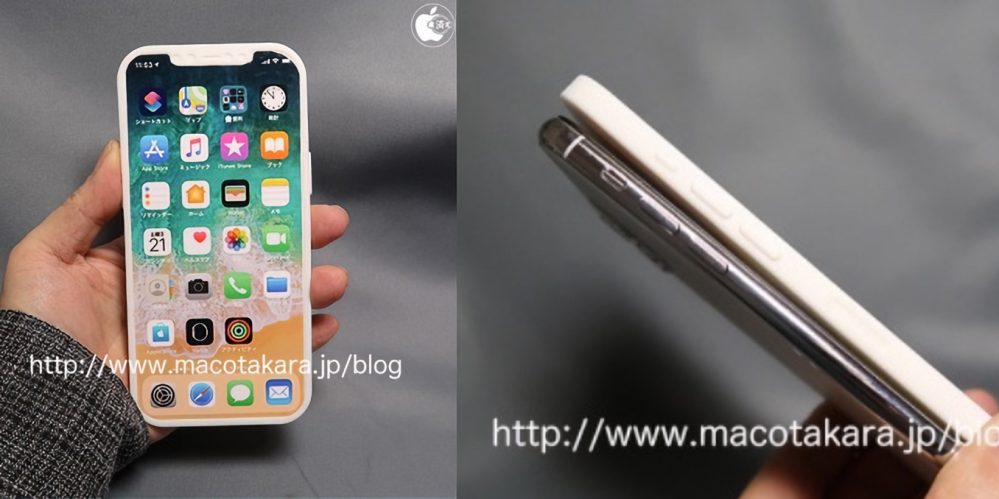
As you can see, in those dummy units, the front-side of the iPhone 12 is expected to look nearly identical to the iPhone 11. There is, however, expected to be one change: a smaller notch. While Apple isn’t expected to remove the notch altogether, reports from Bloomberg and other sources have indicated that Apple will reduce the notch size this year.
But while Apple is planning four new iPhone 12 models for 2020, a report from Bloomberg suggested that the new flat-edged design might only come to the iPhone 12 Pro models at the high-end. Again, this would make sense given what we’ve seen in the iPad lineup: the low-cost iPad has gone largely unchanged, while the iPad Pro features the latest and greatest design.
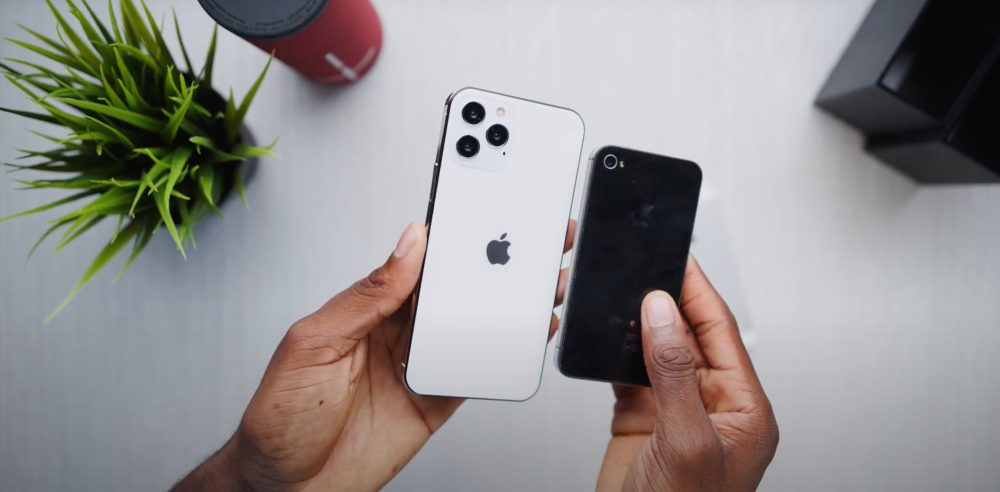
YouTuber MKBHD has also offered one of the clearest looks yet at the iPhone 12 design, going hands-on with all three different sizes. MKBHD also simulated what iOS 14 will look like on the new iPhone 12 design, and showcased how the design is similar to the iPhone 4.
While we have a general idea of what the iPhone 12 will look like, additional rumors will likely shed more light on additional details as the fall release approaches.
Display
For the first time ever, the entirety of Apple’s flagship iPhone lineup will sport OLED display technology this year. All four iPhone 12 models are expected to feature OLED screens, including the successor to the LCD-equipped iPhone 11.
What about display sizing? Reports suggest that Apple will shift the lineup slightly this year compared to the iPhone 11. Here’s what we know so far:
- One iPhone 12 model with a 5.4-inch OLED display
- Two iPhone 12 models with a 6.1-inch OLED displays
- One iPhone 12 model with a 6.7-inch OLED display
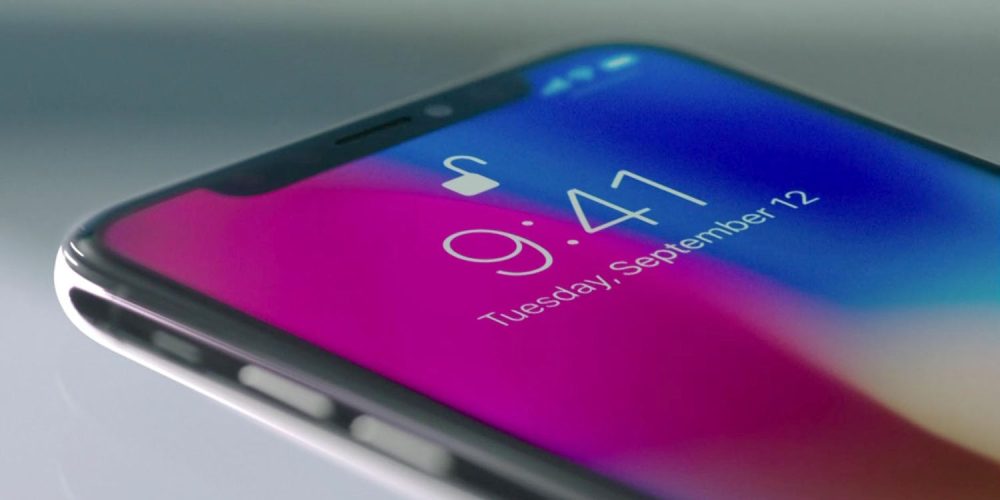
This means the iPhone 12 collection will include the smallest iPhone to ever feature the edge-to-edge display introduced with the iPhone 12, as well as the largest iPhone ever. Reports say that the 5.4-inch iPhone 12 model will have a height that is “midway between the iPhone SE and iPhone 8,” while the 6.1-inch version will be midway between the iPhone 11 Pro and iPhone 11 Pro Max. The 6.7-inch iPhone 12 will be “slightly taller than the iPhone 11 Pro Max.”
Other than OLED, this year’s iPhones are also rumored to feature 120Hz high refresh rate “ProMotion” displays. iPhones to date have included 60Hz displays, but Apple introduced 120Hz refresh rates to the iPad lineup in 2017. The refresh rate doubling dramatically improves the responsiveness of the user experience with gestures more quickly being translated into on-screen motion.
All in all, this may sound confusing, but the gist is: one smaller iPhone 12 mini, two iPhone 12 models the same size as the iPhone 11, and one larger.
iPhone 12 camera
Other than screen size, the biggest differentiator between the iPhone 12 models will be camera technology. Essentially, Apple is planning two iPhones with dual-lens camera systems and two iPhones with triple-lens camera systems.
The 5.4-inch iPhone 12 will feature two cameras on the back. This will likely consist of ultra-wide and wide-angle lenses. The same setup is expected on the lower-end 6.1-inch iPhone 12.
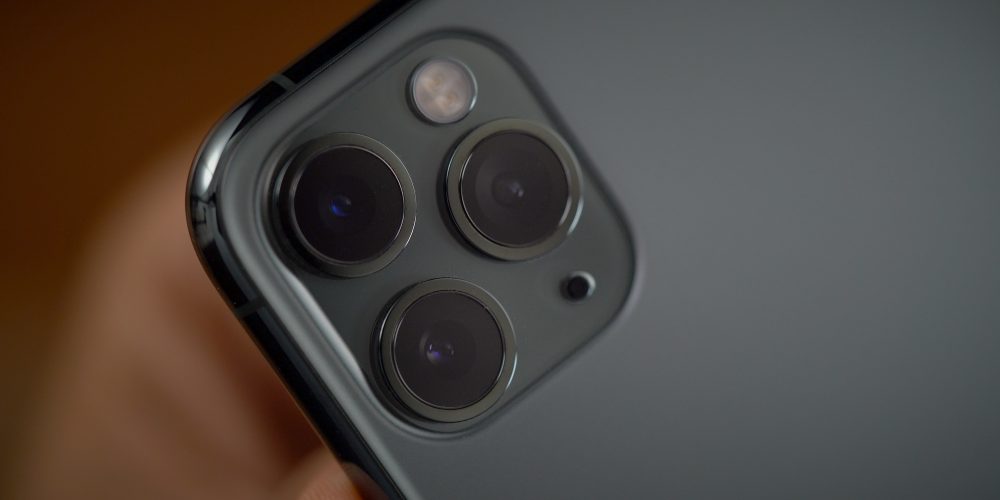
Things get a bit more interesting with the two high-end iPhone 12 models. Here, we expect a triple-lens camera system that is likely similar to the iPhone 11 Pro: wide, ultra-wide, and telephoto. But, these two iPhone models are also expected to feature a new time-of-flight 3D sensor.
What does this mean? A time-of-flight (ToF) sensor is similar to the infrared TrueDepth camera system used on the front-side of iPhones for Face ID. Adding a ToF 3D-sensing system to the back camera would enable higher-fidelity 3D photo captures, potentially opening up new augmented reality opportunities. The ToF sensor would also be more powerful and work at longer distances than the TrueDepth system due to its laser-powered technology.
In addition to augmented reality features, this ToF sensor could also improve things that rely on depth data, such as Portrait mode. Findings within iOS 14 by 9to5Mac have also confirmed that only the iPhone 12 Pro will add the new ToF sensor.
This all makes a lot of sense when you look at the 2020 iPad Pro refresh, which brought a new LiDAR Scanner for the first time. The LiDAR Scanner focuses on improvements to AR capabilities. 9to5Mac has exclusively reported that Apple itself is developing a new augmented reality app for iOS 14 that could integrate with retail stores.
One of the biggest benefits for the iPhone 12 Pro’s LiDAR Scanner, however, will be that developers are better prepared to take advantage of it given the iPad Pro’s existing availability. A leaked image also recently provided a look at how Apple might redesign the camera bump to accommodate the new LiDAR Scanner.
In terms of software, the iPhone 12 models are expected to feature everything currently available on the iPhone 11, including Deep Fusion and Night mode. It also possible that Apple has more software image processing features planned for this year, especially to take advantage of the new ToF technology.
What about the front camera? We don’t know much yet, but there is certainly room for improvement from the iPhone 11. We’ll update when we learn more about the iPhone 12’s front-facing camera.
Power
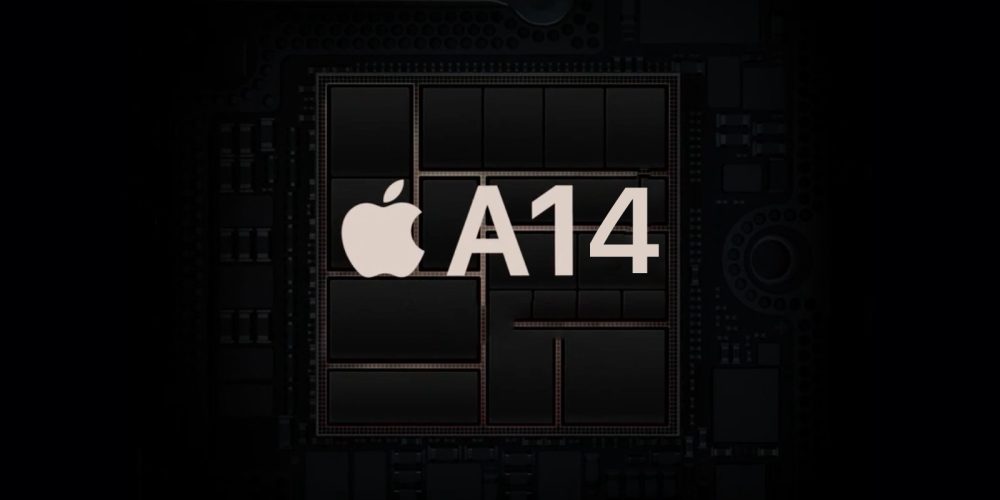
The iPhone 12 lineup is expected to feature the next iteration of Apple’s A-series processors, presumably called the A14.
According to a recent supply chain report, Apple’s partner TSMC is on schedule to start the production of the A14 processor using a new 5-nanometer process in Q2. The A13 was produced with a 7nm processor, so the A14 should be more power-efficient and faster, thanks to the 5nm process.
What kind of performance should you expect? Early estimates suggest that, when combined with the rumored 6GB of RAM, the A14 could make the iPhone 12 as powerful as the 15-inch MacBook Pro. Game performance could be boosted by upwards of 50% thanks to a special emphasis on multi-core performance.
These improvements are due mainly to the 5nm manufacturing process. You can read more details on the A14’s expected performance here.
Outside of the new A14 processor, the iPhone 12 could feature improved Face ID performance as well. Analysts from Barclays say that iPhone 12 lineup will include a “refreshed” Face ID system. What exactly the analysts mean by “refreshed” is unclear, but it could imply that Apple will upgrade the TrueDepth camera system used for Face ID with improved performance and other enhancements.
The iPhone 11 featured improved Face ID performance as well, but that was primarily due to changes in iOS 13 rather than hardware upgrades. This year, it looks like we might be in store for actual hardware improvements to boost Face ID recognition.
Connectivity
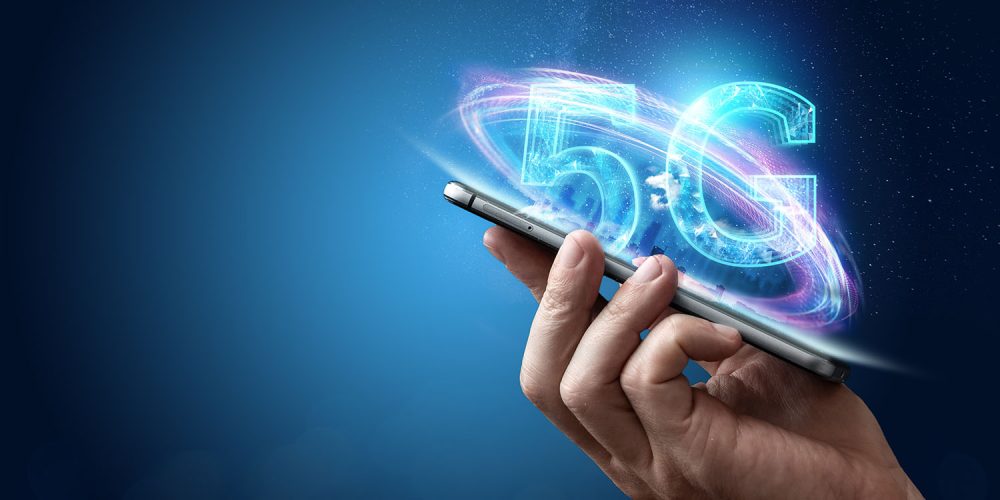
Perhaps most notably of all, all four of the iPhone 12 models introduced this year are expected to feature 5G connectivity. Despite some initial reports to the contrary, all four are expected to include support for both versions of 5G: sub-6 GHz 5G and mmWave 5G.
Different carriers around the world are rolling out sub-6GHz and mmWave networks in different deployments and on different timelines. mmWave is the technology with more impressive gigabit-like speeds, but its range is much smaller. In comparison, sub-6GHz 5G rollouts in the United States typically achieve speeds in the 100-150 Mbps range.
All four of the models will reportedly feature support for both variations of 5G, which will be useful not only for users in the United States but also around the world, where 5G rollouts are different.
While Apple is in the process of developing its own in-house modems for iPhone, the iPhone 12 is likely to feature modems from Qualcomm.
What’s important to keep in mind, however, is that Apple supporting 5G is only half the story: it also needs to be available from carriers. Although the early rollout of mmWave 5G is underway, the extremely limited range means broader rollouts beyond major cities and high-density locations are farther away. If carriers botch the 5G rollout, then it won’t be nearly as notable for the iPhone 12 to have support.
iOS 14 + iPhone 12
The iPhone 12 is expected to be the first iPhone to ship with iOS 14 out of the box. Apple officially announced iOS 14 at WWDC 2020 this year, revealing new features such as widgets on the home screen, picture in picture, and more.
iOS 14 also adds a new App Library view for organizing all of your apps. Apps are automatically organized in the App Library, and you don’t have to keep all of the icons on your actual home screen view. iOS 14 also includes a new Translate application, which offers a complete translator that works with text and voice.
Other changes in iOS 14 include a redesigned Siri interface that doesn’t overtake the entire screen, as well as a new interface for incoming calls that also doesn’t take up the entire screen. You can see all of the new iOS 14 features in action right here.
iPhone 12 accessories
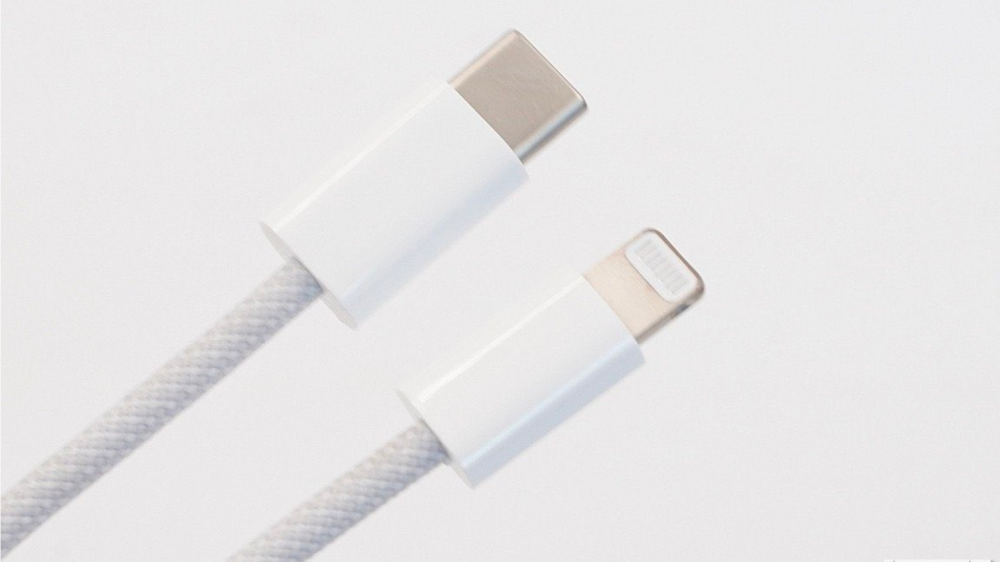
In addition to the many changes coming to the iPhone 12 itself this year, Apple is also rumored to be changing the accessories that are included in the box. According to reliable Apple analyst Ming-Chi Kuo, Apple will not include the wired EarPods or the wall charging brick with the iPhone 12 this year.
For Apple, there are several benefits to this change. First off, removing the in-box charging brick and headphones will dramatically shrink the packaging size and thereby shipping costs. Kuo also suggests that it will help Apple offset the cost of the more expensive 5G components in this year’s iPhone 12. Finally, there are environmental benefits since many people simply don’t need any additional wall bricks.
On the flip side, perhaps to help make up for the lack of earbuds and the wall brick, Apple will reportedly include a higher-end Lightning cable in the box with the iPhone 12. A rumor suggests that the iPhone 12 will come with a new braided Lightning to USB-C cable in the box. This cable would be more durable than the classic Lightning cable, and it would mean that even the non-Pro iPhone 12 models would include a USB-C cable.
iPhone 12: Naming, pricing, and release
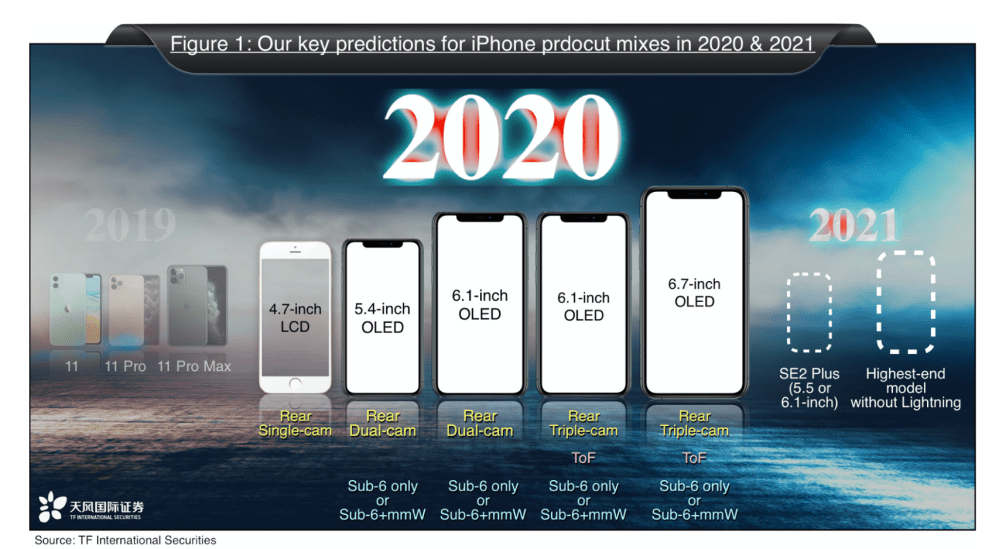
Ming-Chi Kuo’s prediction graphic for the 2020 iPhones
All current evidence points to this year’s iPhone being called the iPhone 12. This makes sense given the expected redesign, which makes it unlikely that Apple will make 2020 an “S” year for iPhone upgrades.
A pair of recent leaks have offered details on how Apple might name the iPhone 12 lineup across all four models. The very reliable leaker L0vetodream has reported that Apple’s iPhone 12 lineup will be branded as follows:
- iPhone 12 mini
- iPhone 12
- iPhone 12 Pro
- iPhone 12 Pro Max
Much like naming, the pricing of unreleased iPhone models is generally hard to predict. Apple set a precedent in 2019 by dropping the entry-level iPhone 11 price to $699, but whether or not that continues remains to be seen.
And last but not least, details on the iPhone 12’s release date. The COVID-19 pandemic has caused delays in the development process for Apple, and the company is said to be “scrambling” to prevent pushing back release dates. Apple is also reportedly concerned about potential economic uncertainty, and that there might not be enough demand for high-end iPhones this fall.
Flagship iPhone models usually launch around September, with some models shipping in October, such as the iPhone XR in 2018, and the iPhone X in November of 2019. In a surprising move, Apple has confirmed that the release of the 2020 iPhone lineup will be later than originally expected. During the company’s Q3 2020 earnings call, Apple CFO Luca Maestri addressed the fact that the iPhone 12 will be released “a few weeks” later than the iPhone 11 was released in 2019.
While covering what to expect from Apple during the company’s fiscal Q4 2020, Maestri explained that Apple began selling new iPhones in September of 2019. This year, Maestri says Apple currently expects the new iPhones to come several weeks later. “As you know, last year we started selling iPhones in late September,” Maestri said during the call. “This year, we expect supply to be available a few weeks later.”
The iPhone 11 and iPhone 11 Pro were released on September 20 last year. A three-week delay this year would mean the iPhone 12 lineup could be released in mid-October at the earliest. It’s also possible that Apple staggers the iPhone 12 debut across all of October and November.
Finally, Apple held an event on September 15 – but the iPhone 12 was not included. Instead, this event focused on Apple’s newest Apple Watch and iPad hardware, as well as the announcement of the Apple One services bundle, a new Fitness+ service, and iOS 14 release date information. The lack of an iPhone 12 mention during the September event all-but-guarantees that the iPhone will be announced sometime in October instead.
What do you think of the rumors we’ve seen so far about this year’s iPhone lineup? What do you think we can expect in terms of naming and pricing? Let us know down in the comments!
Author: Chance Miller
Source: 9TO5Mac



